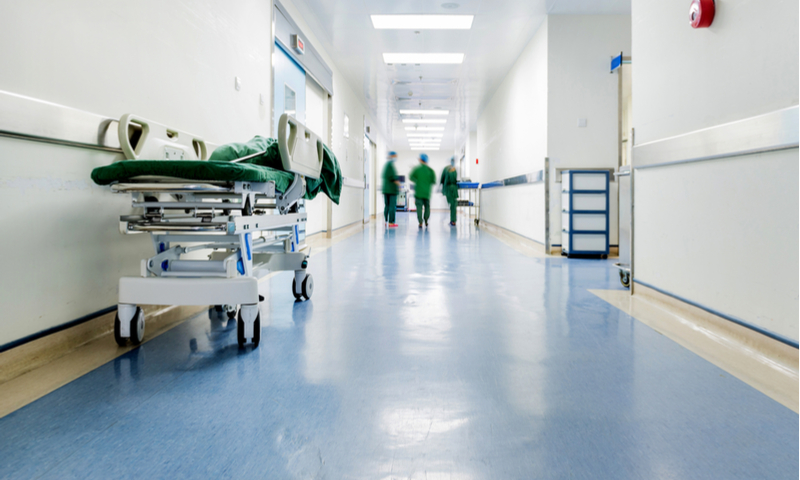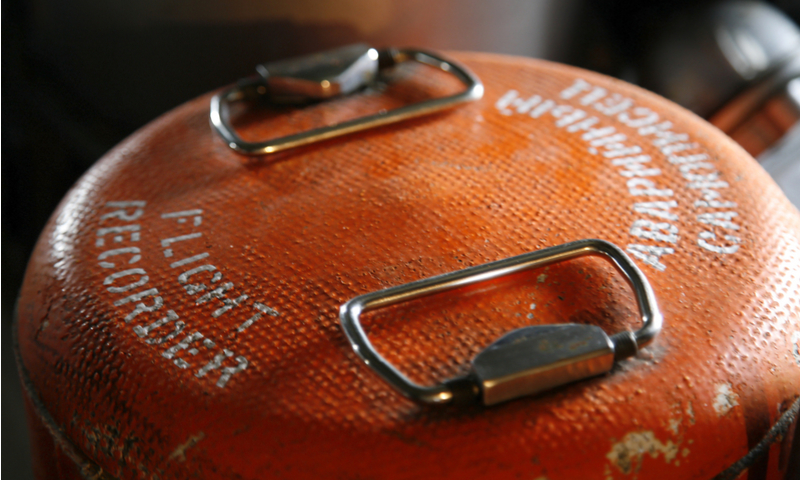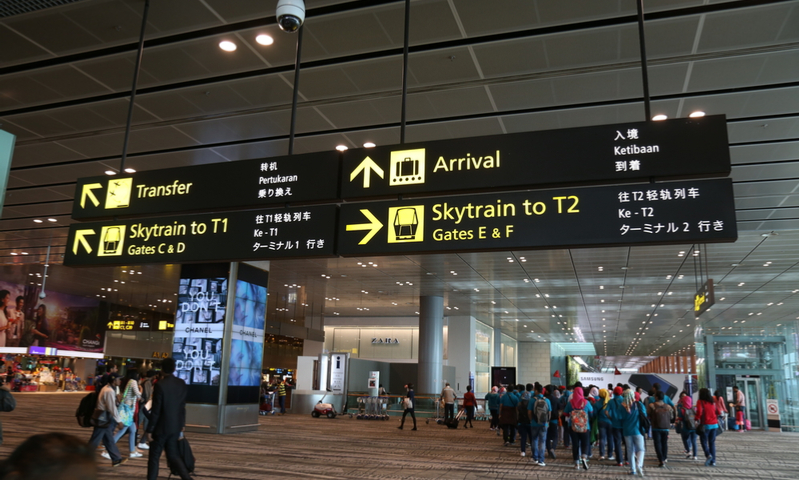It’s safer 35,000 feet in the air than it is in hospitals so what can doctors learn about safety systems from the airline industry?
Airline captain Richard Champion de Crespigny charges across the stage, reeling off figures at an alarming speed.
The number of explosions heard four minutes after QF32 took off from Singapore’s Changi airport (two); the number of the plane’s systems affected after the explosion in engine two (21 of 22); number of holes in a wing (several) the number of checklists spewing out from the plane’s emergency system (over 400) the number of people on board the flight (469).
The uncontained engine failure successfully navigated on November 4, 2010 by the Sydney pilot with the French surname “Champion de Crespigny” was an unprecedented event.
The probability of the engine failing was 10 to the power of minus 14.7.
The Qantas pilot and AM was invited to deliver this year’s presidential lecture at COSA’s annual scientific meeting in Sydney, to share insights on some of the keys to the successful management of high-risk scenarios.
It’s the first time the address has been given by someone outside of medicine, explains COSA president Professor Phyllis Butow, adding that oncology and aviation share much in common.
“In the airline industry and in cancer you hold people’s lives in your hands, so that immense responsibility of making sure you land a plane full of people and the immense responsibility that oncologists and the oncology teams have to land people in good health there’s a sort of shared honour and burden in that.”
HOSPITALS ARE MORE DANGEROUS THAN AEROPLANES

The probability of dying during an activity is measured using micromorts: one unit equals a one-in-a-million chance of death.
Walking into a hospital is worth 49 micromorts, as calculated by the statistics on medical accidents and errors, de Crespigny tells the audience of COSA delegates.
In comparison, one micromort is equivalent to flying 19,600 km or ten average flights in commercial jet aircraft.
“In other words, one hospital visit is equivalent to 490 average (two hour) flights. That’s just facts.”
This isn’t the first time comparisons have been drawn between aviation and healthcare.
According to a paper published in 2016 by UK researchers while the number of worldwide flight hours doubled to 54 million in the two decades to 2013, the number of fatalities has fallen from approximately 450 to 250 per year, the authors write.
“In a safety-centric organisation, shaming and bullying have no place,” – de Crespigny
“This stands in comparison to healthcare, where in the USA alone there are an estimated 200,000 preventable medical deaths every year, which amounts to the equivalent of almost three fatal airline crashes per day,” they noted.
“As the renowned airline pilot Chesley Sullenberger noted, if such a level of fatalities was to happen in aviation, airlines would stop flying, airports would close, there would be congressional hearings and there would be a presidential commission. No one would be allowed to fly until the problem had been solved.”
A CULTURE OF SELF-REPORTING
Healthcare could stand to benefit from taking a leaf out of the aviation rule book, but this would require cultural change.
In a safety-centric organisation, blame and bullying have no place, says de Crespigny, and honest mistakes are never disciplined.
“If you don’t have that culture of people self-reporting to identify the errors and then letting authorities change the safety procedures to prevent the error happening again, errors tend to be repeated, errors tend to be hidden and safety plateaus.”
Promoting safety also means proving fitness for the job, he says.
“How many times after surgeons leave the College of Surgeons are they re-certified?”
“For pilots it’s seven times a year, four times in a simulator. We’re taken to hell and back, we’re sweating we are pushed into things that are hard and uncomfortable. Sometimes we pass, sometimes we fail.”
“We are continually re-certified, there is a medical check once a year, emergency procedures (check), there’s a route check (where a senior pilot assesses a real-life flight)”.
RECORDING DATA INCREASES TRANSPARENCY

High levels of transparency are also crucial and doctors should not be afraid of increased surveillance, such as having surgeries recorded, de Crespigny says.
“In medicine when surgeries are recorded safety goes up,” he says.
“Pilots have had data recorded for the past 40 years – we accept that as part of safety for the passengers. So, recording in the surgery should be part of the safety for the patient”.
But such monitoring must be accompanied by protection – doctors need to know the evidence gathered in the interests of safety cannot be used in litigation.
The recordings from the cockpit on QF32 will only ever be heard by the five pilots who were on board, and the two ATSB investigators who carried out the probe into the incident, he explains.
It is also necessary to foster a culture where all team members – regardless of their position in a workplace hierarchy – are empowered to call a stop on any operation if they believe safety is at risk.
He gives the hypothetical scenario of a surgical team – a nurse notices a surgeon poised to begin an operation has not washed his hands. What are the repercussions if they say ‘stop – wash your hands’?”
“Do they have the authority to call ‘stop’? Will they have the confidence to say ‘stop’? Will they be supported after calling ‘stop’?
EFFECTIVE LEADERSHIP IS A CRITICAL PART OF SAFETY

Effective leadership is also critical to promoting safety, particularly during an emergency.
Captain de Crespigny suggests an effective leader will “suck the brains dry” of all their employees.
This was the approach he took during the harrowing moments on QF32 as the plane shuddered and emergency alarms wailed.
He pooled the collective wisdom of the other four pilots in the cockpit – who had almost a century of flying experience between them – with his own. In essence, he created a superbrain.
“The leader is like a conductor of an orchestra. He’s moving the baton but he’s not making any music. In these big teams the leader ideally sits back and does nothing other than think, decide and then delegates everything.
“When things get more complex, the leader has to sit back and slow down more to create more time to think of more options.
“The more he’s active, the less time he can appraise everyone’s opinions, keep an awareness of the whole situation and lead to a successful outcome. You can’t micromanage, you must trust and delegate to your teams and let people do things their way.”
ACCOUNTABILITY WHEN THINGS GO WRONG

For de Crespigny, providing transparency and accountability to the passengers who were on board QF32 was a critical part of saving the Qantas brand from negative PR in the days and weeks that followed.
After the flight landed safely at Singapore’s Changi airport with no casualties, he provided passengers with his mobile phone number.
“I said ‘you’re leaving my control, but I guarantee I will continue to protect you.
“‘So here is my mobile number so call me if you have any complaints or problems or you need my help’.”
“To this day zero people have called to complain, zero have asked for help but 20 people have said ‘thanks very much, great job, let’s have a beer’,” he says.
“My concern for Q32 passengers was the same as your concern is for every one of your patients. When you do give full and open disclosure, litigation drops towards zero.
“It’s also critical that people have a single point of contact during a crisis.
“When you provide this, you build trust, turn victims into disciples and evangelists, and protect your brand.”